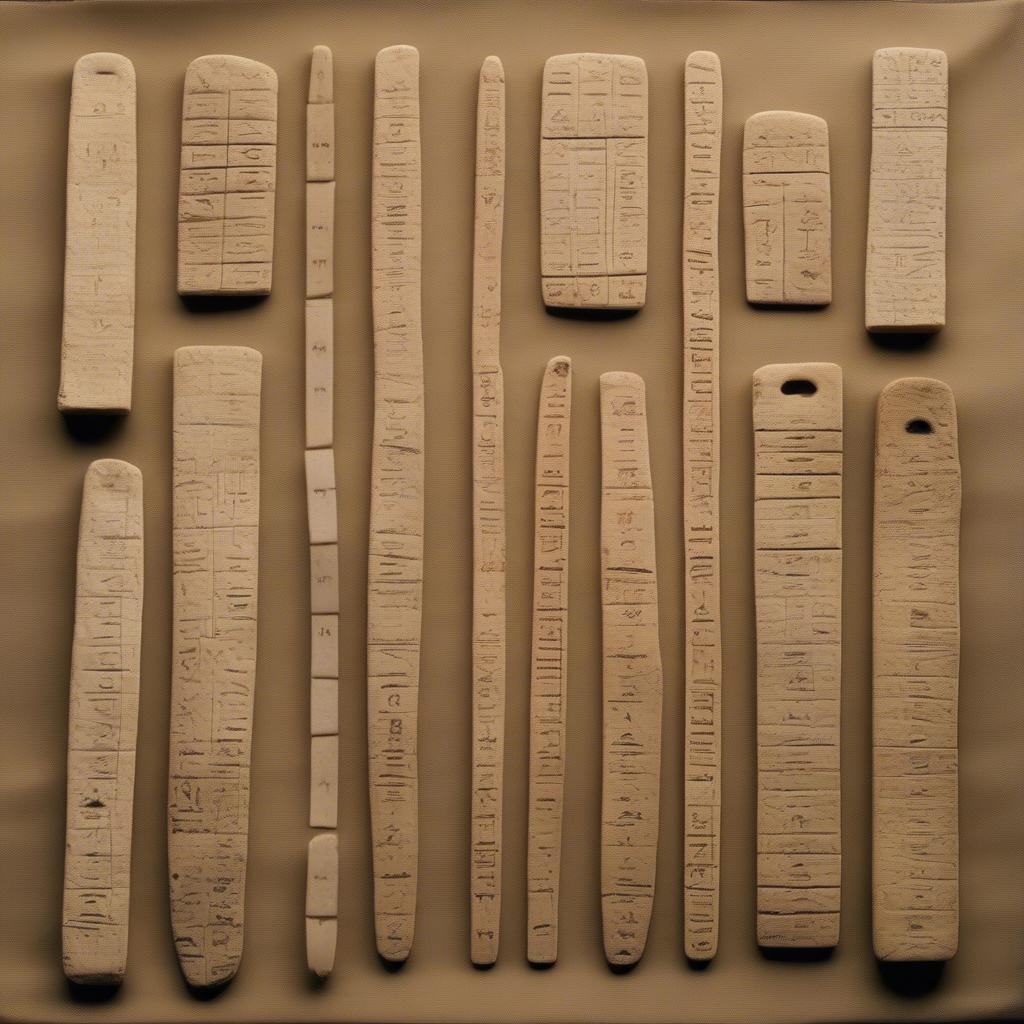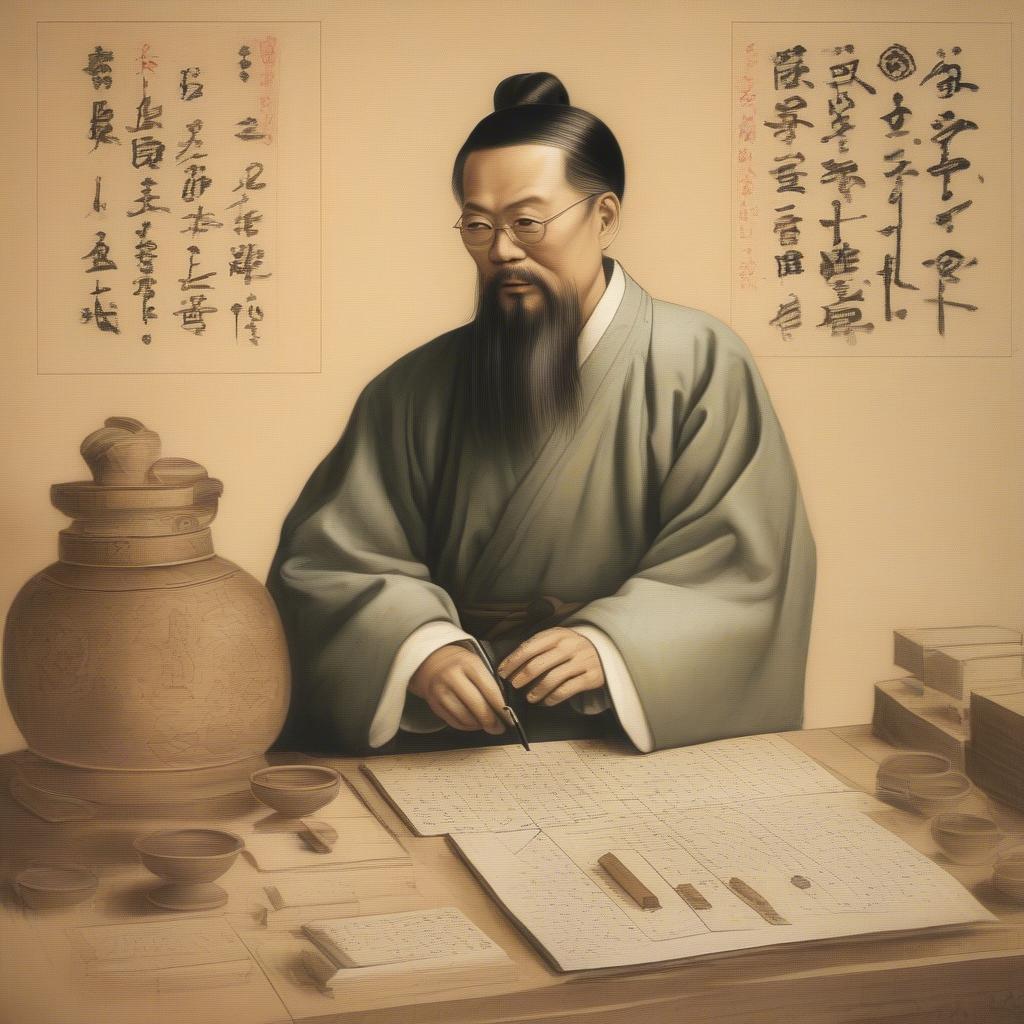
Mathematics, unlike a tangible invention, wasn’t created by a single person. Its story is one of gradual development, built upon by countless cultures and individuals across millennia. Asking “Who Created Mathematics?” is like asking who created language. It evolved organically, driven by the human need to understand and interact with the world. From the earliest counting systems to the complex theories of today, mathematics is a testament to human ingenuity and our enduring quest for knowledge.
Table Content:
Early Counting and the Dawn of Mathematics
The earliest forms of mathematics arose from practical needs. Ancient civilizations needed ways to track livestock, trade goods, and measure land. Evidence suggests that tally systems, using notches on bones or stones, were in use as far back as 30,000 BCE. These simple marks represent the very first steps towards abstract thinking, laying the foundation for the development of numerical systems. Different cultures developed unique counting methods. The Babylonians, known for their advanced astronomical calculations, used a base-60 system, which is why we still have 60 minutes in an hour and 360 degrees in a circle. The Egyptians, with their impressive architectural feats, developed a base-10 system, similar to what we use today.
 Ancient Counting Systems: Tally Sticks and Clay Tablets
Ancient Counting Systems: Tally Sticks and Clay Tablets
The Greeks and the Formalization of Mathematics
While many cultures contributed to the early development of mathematics, the ancient Greeks are often credited with transforming it into a formal discipline. Figures like Thales, Pythagoras, and Euclid moved beyond practical calculations and began exploring abstract concepts like geometry and proof. Thales, considered one of the Seven Sages of Greece, is credited with using deductive reasoning to establish geometric theorems. Pythagoras, whose name is synonymous with the famous theorem about right-angled triangles, founded a school of thought that saw mathematics as the key to understanding the universe.
 Greek Mathematicians: Pythagoras, Euclid, and the Study of Geometry
Greek Mathematicians: Pythagoras, Euclid, and the Study of Geometry
The Golden Age of Islamic Mathematics
Following the decline of the Roman Empire, the center of mathematical advancement shifted to the Islamic world. During the Islamic Golden Age, from the 8th to the 13th centuries, scholars translated and preserved Greek texts, while also making significant contributions of their own. Al-Khwarizmi, whose name gives us the word “algorithm,” developed algebra as a distinct branch of mathematics. His work laid the groundwork for modern algebraic notation and problem-solving techniques. Other notable figures include Ibn Sina (Avicenna) and Omar Khayyam, who made significant contributions to medicine, astronomy, and mathematics.
 Islamic Golden Age of Mathematics: Al-Khwarizmi and the Development of Algebra
Islamic Golden Age of Mathematics: Al-Khwarizmi and the Development of Algebra
Mathematics in the Renaissance and Beyond
The European Renaissance saw a renewed interest in classical learning, including mathematics. This period witnessed the development of new mathematical tools and techniques, driven by advancements in navigation, astronomy, and art. The invention of calculus by Isaac Newton and Gottfried Wilhelm Leibniz revolutionized the study of motion and change, paving the way for modern physics and engineering. Subsequent centuries saw the rise of new branches of mathematics, including probability, statistics, and non-Euclidean geometry.
“Mathematics is a language, and it’s a language that allows us to describe the universe in a precise and rigorous way,” says Dr. Amelia Sharma, a theoretical physicist at the University of Cambridge.
The Ongoing Evolution of Mathematics
Today, mathematics continues to evolve, driven by new challenges and technological advancements. Fields like computational mathematics and data science are pushing the boundaries of what’s possible, enabling us to analyze vast datasets and model complex systems.
“The beauty of mathematics lies in its ability to connect seemingly disparate fields,” explains Dr. Jian Li, a mathematician at Peking University. “From the patterns in nature to the algorithms that power our digital world, mathematics provides a unifying framework for understanding the world around us.”
Conclusion
So, who created mathematics? The answer is no single individual, but rather a collective effort spanning thousands of years. From the earliest counting systems to the complex theories of today, mathematics is a testament to human curiosity, ingenuity, and our enduring quest for knowledge. It continues to evolve, shaping our understanding of the world and driving innovation in countless fields.
FAQ
What is the oldest known mathematical artifact? The Ishango bone, discovered in the Democratic Republic of Congo, is believed to be over 20,000 years old and may contain the earliest known demonstration of prime numbers.
Why is mathematics considered a universal language? Mathematical concepts and principles are consistent regardless of language or culture. A mathematical equation means the same thing anywhere in the world.
How did ancient civilizations use mathematics? Ancient civilizations used mathematics for practical purposes like tracking livestock, trade, measuring land, and building structures.
What is the significance of the Islamic Golden Age in the history of mathematics? Scholars during the Islamic Golden Age preserved and translated Greek mathematical texts, while also making significant original contributions, particularly in algebra.
How has technology influenced the development of mathematics? Technology, especially computers, has allowed for complex calculations and the exploration of new mathematical fields like computational mathematics and data science.
What are some of the major unsolved problems in mathematics? The Riemann Hypothesis, the P versus NP problem, and the Birch and Swinnerton-Dyer conjecture are among some of the most challenging unsolved problems in mathematics.
How does mathematics impact our daily lives? Mathematics is fundamental to many aspects of our daily lives, from finance and technology to engineering and medicine.
